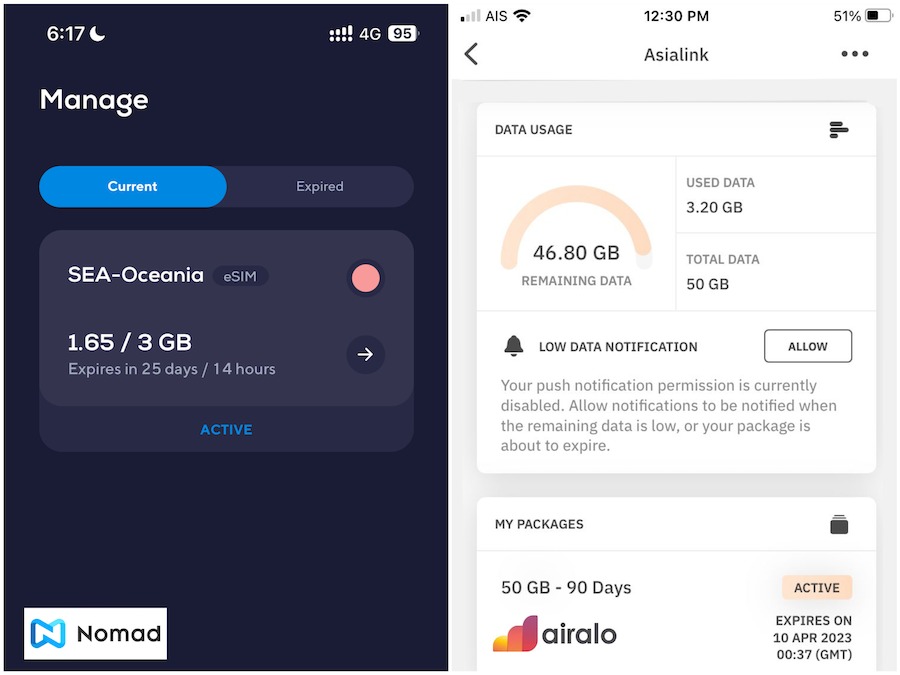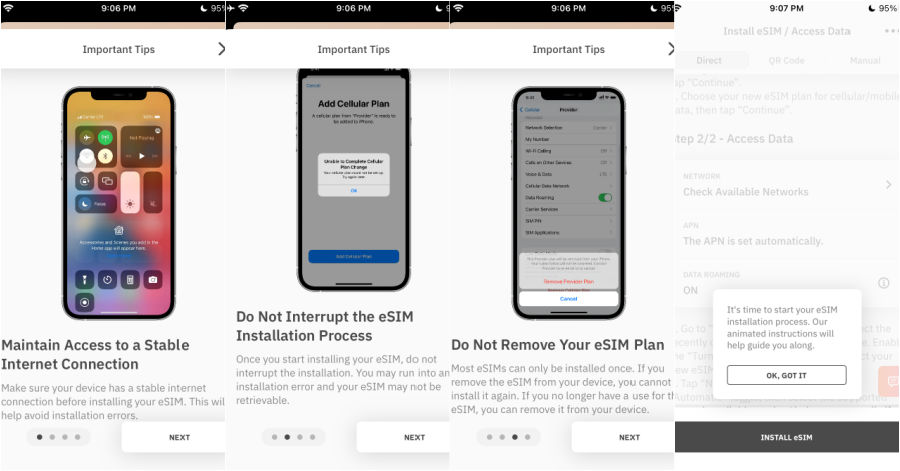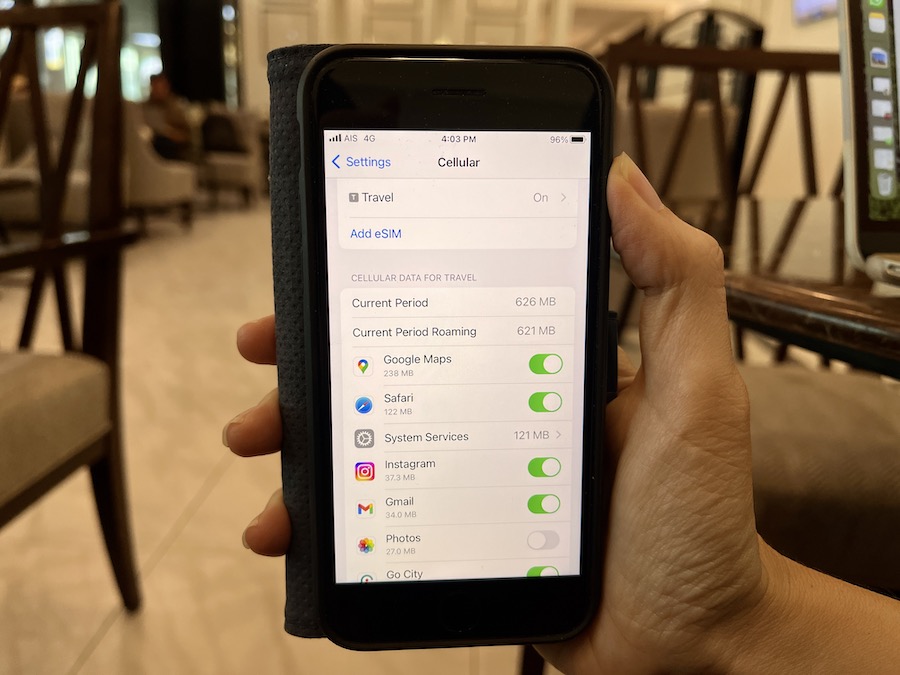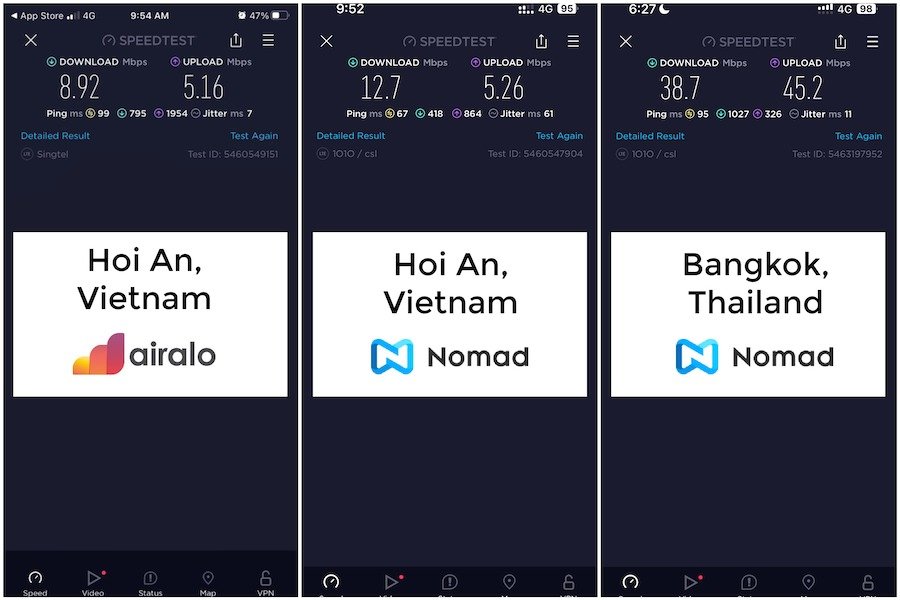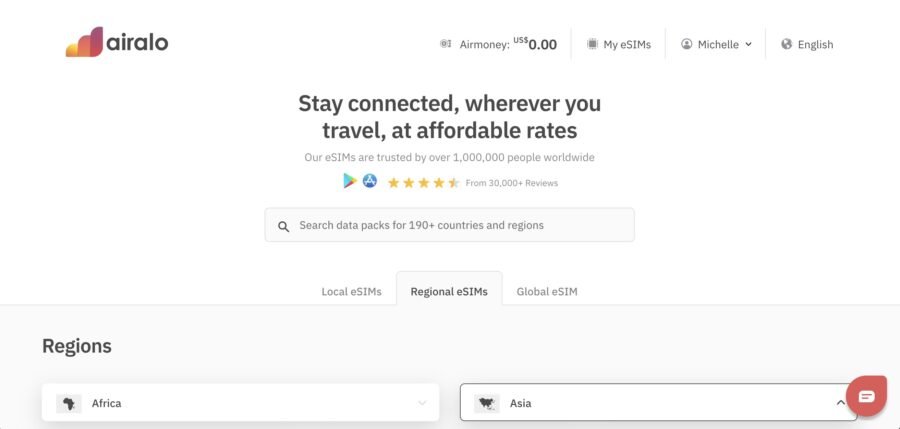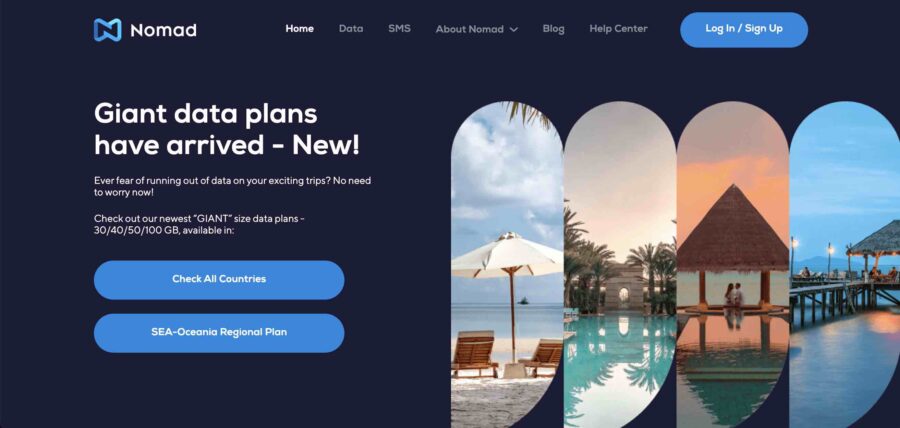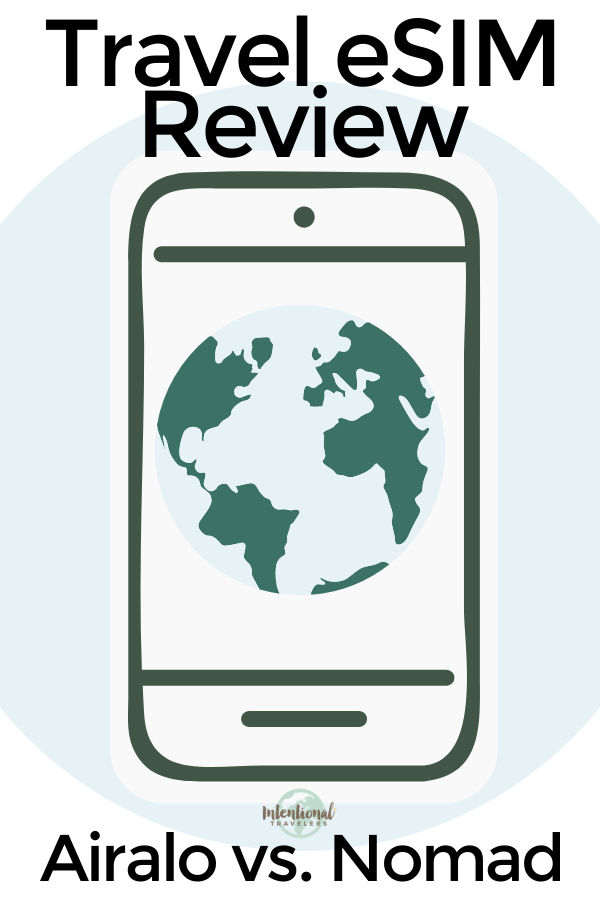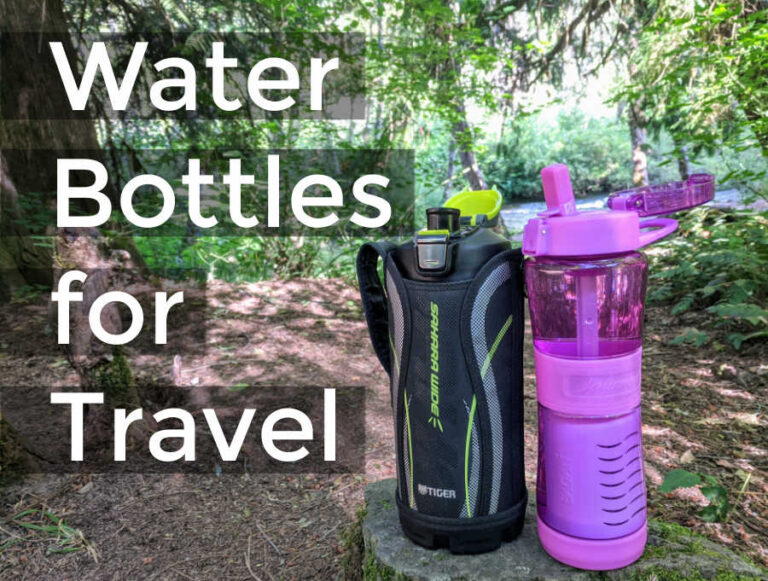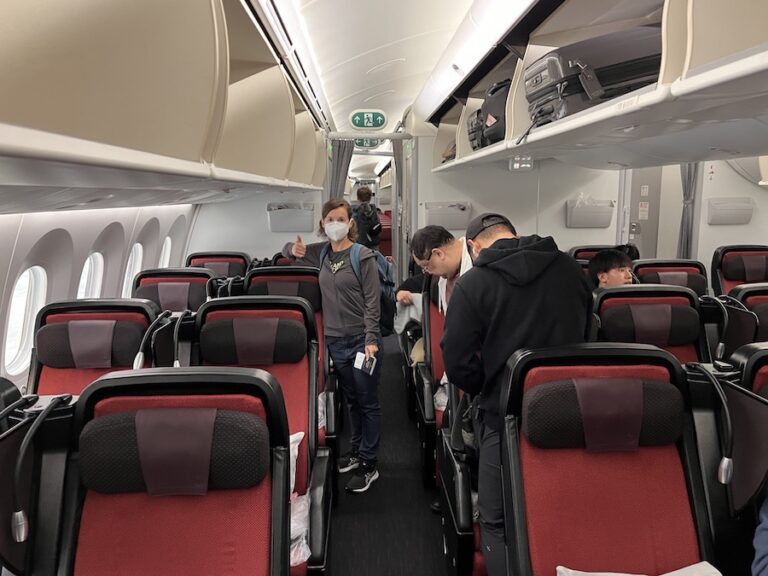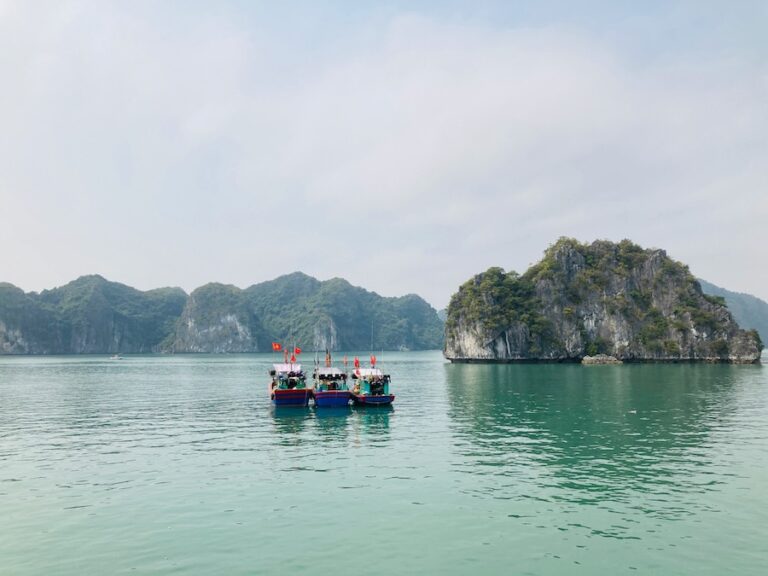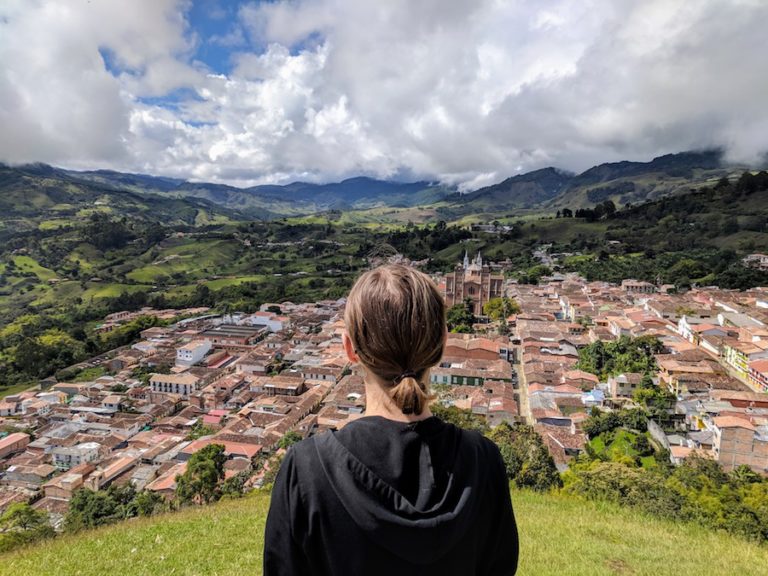Airalo vs. Nomad: Southeast Asia eSIM Review Comparison
For over 10 years of international travel, we were using regular SIM cards to stay connected while abroad. For each new country, we would have to figure out how to get a SIM card.
We had to figure out the best phone companies in the country and how their plans worked.
We’d have to physically install and not lose the tiny SIM cards.
Often, we had to navigate all this in a different language and foreign currency.
Despite being told by customer service in Ecuador that our monthly plan was canceled as we departed the country, we received emails from the company wanting to collect another month’s fee for over a year!
SIM cards certainly have not been the smoothest aspect of our travels.
But eSIMs are changing the game.
We were excited but hesitant when we first learned about eSIMs. Would it really be a great tool for travelers?
The eSIM market is expanding quickly, but today we’re going to share with you our thoughts about two leaders in the space: Airalo and Nomad.
Disclosure: We received complimentary data plans from Airalo and Nomad so that we could test and review their products. All opinions are our own. This post also contains affiliate links. You are not obligated to purchase through our links, but if you do, we may receive a small commission, at no additional cost to you.
Table of Contents
What to know about eSIMs
An eSIM is a digital version of a SIM card for your phone.
E-SIMs combined with a prepaid data plan give you cellular data connectivity in the country or region of your choice.
Because eSIMs are digital, installation is quick and convenient. E-SIM set up can be done without going into a phone store or navigating a foreign language.
Data plans through eSIMs are significantly more affordable than purchasing international plans from US cell phone companies. Cheaper data plans could be found in the country you’re visiting but eSIMs are fairly comparable to those prices. You’re paying for convenience.
What is required of my smartphone to use eSIMS for travel?
- You’ll need a smartphone that’s has eSIM capability. Most newer phones (circa 2018) are, and you can do a quick web search to check if your phone has eSIM capability.
- Your phone needs to be unlocked. Because eSIMs work with different networks (outside of your main one), you’ll need your phone to be unlocked. This usually means that you’ve fully paid off your phone (no payment plans) and went through an unlock process with your carrier. Again, a quick web search on “how to unlock my phone with insert name of your carrier” will give you the steps you need to do this.You cannot take advantage of eSIMs for travel if you do not meet these two requirements.
Most recent smartphones also allow for dual sim functionality which means I can keep my T-Mobile SIM going at the same that I’m using a travel eSIM.
You can install eSIMs from different companies and purchase a la carte plans based on your travel needs. There’s no contract.
In other words, you can start with Airalo if they offer the best plan initially and switch over to Nomad later if they have a different plan that is a better match for the next leg of your trip.
Airalo vs. Nomad: Similarities
Both of these companies offer eSIMs and prepaid data plans. Both of them work fairly similarly.
You find and purchase the data plan you want using their website OR mobile app. You’ll need to create a user account as well.
They will then send you instructions (via email, the website, or the app) on how to install your eSIM via a QR code.
Once the eSIM is digitally installed on your phone, using their mobile apps, you can then activate a data plan whenever you’re ready.
Both companies offer individual country plans as well as multi-country/region-specific plans.
With the regional plans, you can travel from country to country and stay connected to cellular data without needing to reinstall or change plans. It’s very convenient!
We’ve found that both Airalo and Nomad offer competitive pricing, compared to local carriers, and far superior pricing and data options compared to US based phone companies that offer international data plans.
We also like that both companies have easy to use websites and mobile apps with strong Help sections and documentation.
I felt fairly confident that most people could use their sites and get started without needing assistance.
How are Airalo eSIM vs. Nomad eSIM different?
First the obvious: both offer different plans and pricing.
Their eSIM prepaid data plans differ by data amount offered, length of time, and price per plan. But these differences are negligible.
Their plans and offerings are pretty similar to one another, just not exactly the same.
Maybe the most important difference to note is that both companies offer different country availability for their regional plans. It would be worth going through their website/app to find the plans that best fit your needs and check the country availability.
On Airalo, click on the “Countries –>” to see a list per plan. For Nomad, look for the word “Availability” to see a country list.
Nomad seems to have better individual country plans compared to Airalo’s individual country plans. Both offer good regional plans.
Finally, Nomad offers SMS texting-only plans. Airalo does not.
Asia eSIMs Review: Testing on our Southeast Asia Digital Nomad Trip
We’re happy to report that our eSIMs have worked great for our travels in Singapore, Vietnam, and Thailand.
Before we even got on our first flight, we had our eSIMs from Airalo and Nomad, two highly reputable companies in this space.
The process to purchase and install our eSIMs and their respective plans was smooth.
Again, one of the benefits of going with an eSIM and these companies is that they offer regional, multi-country coverage.
Here was the breakdown of plans from Airalo and Nomad for the SE Asia region. You’ll also notice that I added T-Mobile’s options for international data passes, as they are our US cellular company:
| SE ASIA OPTIONS | Option 1 | Option 2 | Option 3 |
| Airalo* | $5 / 7 days / 1GB | $20 / 30 days / 5GB | $37 / 30 days / 10GB |
| Nomad** | $6 / 3 days / 1GB | $16 / 10 days / 5GB | $38 / 30 days / 20GB |
| T-Mobile*** | $5 / 24 hrs. / 512MB | $35 / 10 days / 5GB | $50 / 30 days / 15GB |
*Regional plan. Airalo offers access to 13 SE Asian countries for these options.
**Regional plan. Nomad offers access to 7 SE Asian countries + Australia and New Zealand for a total of 9 for the above prices.
***One country per plan.
Important note: Prices, data options, and availability change all the time with both companies. What you see above was what was available to us at the time of writing (02/2023).
Here are the Asian countries covered by both Airalo and Nomad:
| AIRALO ASIALINK PLAN (13 countries) | NOMAD APAC PLAN (12 countries) |
| Cambodia | Australia |
| China | China |
| Hong Kong | Singapore |
| Indonesia | Indonesia |
| Japan | Japan |
| South Korea | South Korea |
| Laos | New Zealand |
| Macao | Sri Lanka |
| Malaysia | Malaysia |
| Philippines | Philippines |
| Thailand | Thailand |
| Vietnam | Vietnam |
| Taiwan |
The obvious should be noted – both of these companies offer different country connectivity for Asia eSIM plans.
Both of them offered coverage in the countries where we spent the majority of our time: Vietnam and Thailand. And both worked well.
To quote one of our favorite Vietnamese sayings, these eSIM companies are “same same, but different”.
We really like that both companies have a wide range of plans to fit various needs. In fact, when comparing the two, it should be noted that while Nomad’s APAC plan covers 12 countries, we didn’t need access to all of those so we chose the smaller SE-OCEANIA plan.
Airalo only had one Asian region option.
Both have lots of plans to work with so you should be able to find one that works with your itinerary.
How to purchase a data plan and install an eSIM from Airalo or Nomad:
- Go to Airalo.com or Nomad’s website OR download their app from the Apple App store or Android Play store.
- Find the plan you want and make your purchase using a credit card.
- Create an account and login.
- Follow the instructions sent in the confirmation email (or the app) to install the eSIM to your phone.
- When you’re ready, activate the plan using the app connected to WIFI.
- Go to your cellular settings and customize the apps that you want to use your plan with.
- Start using your phone like you normally would.
Did we have any issues with our eSIMs while traveling in SE Asia?
There was only a couple of things worth noting. When we landed in different places from an airplane, the data connection took some time. It wasn’t always instantaneous once we turned off airplane mode.
Actually, we found that we sometimes had to turn off the phone and turn it back on to reset the cellular network connection when landing in a new country.
Are eSIMs Good for Digital Nomads in Vietnam and Thailand?
Yes! In our tests, both Airalo and Nomad eSIMs were great for use in Vietnam and Thailand.
Getting up and running with both companies was pretty smooth and network connection for eSIM data happened a short time after landing in either of the countries.
It was nice to be able to start using our apps to see how much taking a Grab car from the airport to our hotel was going to be or looking at the traffic/directions in Google maps.
Asia eSIM Speed Tests
Here are examples of speed tests we did in Hoi An, Vietnam and Bangkok, Thailand.
These data speeds are more than enough to do anything you’d want to with your smartphones. The biggest speed difference is not between companies but rather a factor of the location.
Semi-rural coverage in the central Vietnam and northern Thailand countryside was also good. Most of the time we were in urban or semi-urban areas, so we didn’t seem to have any issues with connection.
Two of the main apps we use often while traveling in SE Asia are Google Maps and Grab (a ride share app). Both worked well.
Sometimes Grab had a hard time pinning our exact location in Bangkok but I don’t think that was any fault of the data connection with our eSIMs.
Airalo eSIM Review
Airalo started in 2019 and has been a notable player in the eSIM market. Their website is easy to use with a country search right at the top of the site. This made for easy viewing of their plans.
What we liked about Airalo:
- Plans are easy to find and search through.
- They provide a great overview of how it works (good visuals and explanations)
- They have an extensive support library within their “Help Center”.
- Good mobile app.
- Smooth process to find a plan and make a purchase.
- Great long-term options.
Similarly, the mobile app was easy to use and mirrored the website, which is always helpful. It made the experience seamless whether we logged into our account on the website or the app.
The only minor drawback we could find with Airalo, compared to Nomad, was that their individual plans for the countries we were visiting – Singapore, Thailand, and Vietnam – were limited.
Where Airalo shines compared to Nomad is with their long-term options. Nomad’s plans currently end in 30 days, though they may soon expand. Airalo’s longest duration plan is for 180 days (~6 months).
Not only was the duration longer, but it was more economical than using multiple Nomad plans over 6 months. This would make Airalo an ideal choice for a Digital Nomad or expat living abroad that wanted to use an eSIM for an extended period.
Nomad eSIM Review
Nomad doesn’t share much company information on their website but they are a brand owned by LotusFlare Inc.
Nomad has good plans and options for the prepaid eSIM data plans. They also offer SMS text plans for 3 countries with plans to offer more.
Similar to Airalo, they have a clean, easy to use website and app that made the experience very smooth.
What we like about Nomad:
- The website and app’s styling and functionality.
- Plans are easy to find and search through.
- Lots of good individual-country and regional plans.
- Different data option plans to meet a variety of needs.
- The process to find a plan, purchase, install the eSIM, and get connected was smooth.
- Good support library.
The only gripes we had with the Nomad website/app was that it felt like an extra step to search for countries in a regional plan, whereas Airalo put that front and center.
You have to look for the word “availability” and to us, which isn’t as intuitive as “countries” or “country availability”.
Finally, the longest plan they had at the time of this writing was 30 days. In some ways, it makes sense, as most of their customer base is probably not traveling for longer than that.
We’re told they intend to roll out 60 day plans any time now and may release longer duration plans as well.
Longer plans are more enticing for us long-term Digital Nomads. It remains to be seen if Nomad’s long-term plans will be affordable, as Nomad tends to include more Gigs of data than we need.
Asia eSIM Review: Nomad vs. Airalo Conclusion
We’re convinced that travel eSIMs are the new way to go for digital nomads and everyday travelers. To be honest, you can’t really go wrong with Nomad or Airalo.
Both eSIM companies worked great for us. We recommend using whichever one has a plan that works best for your itinerary, budget, and data needs.
Like this post? Pin it for later or share with friends!

